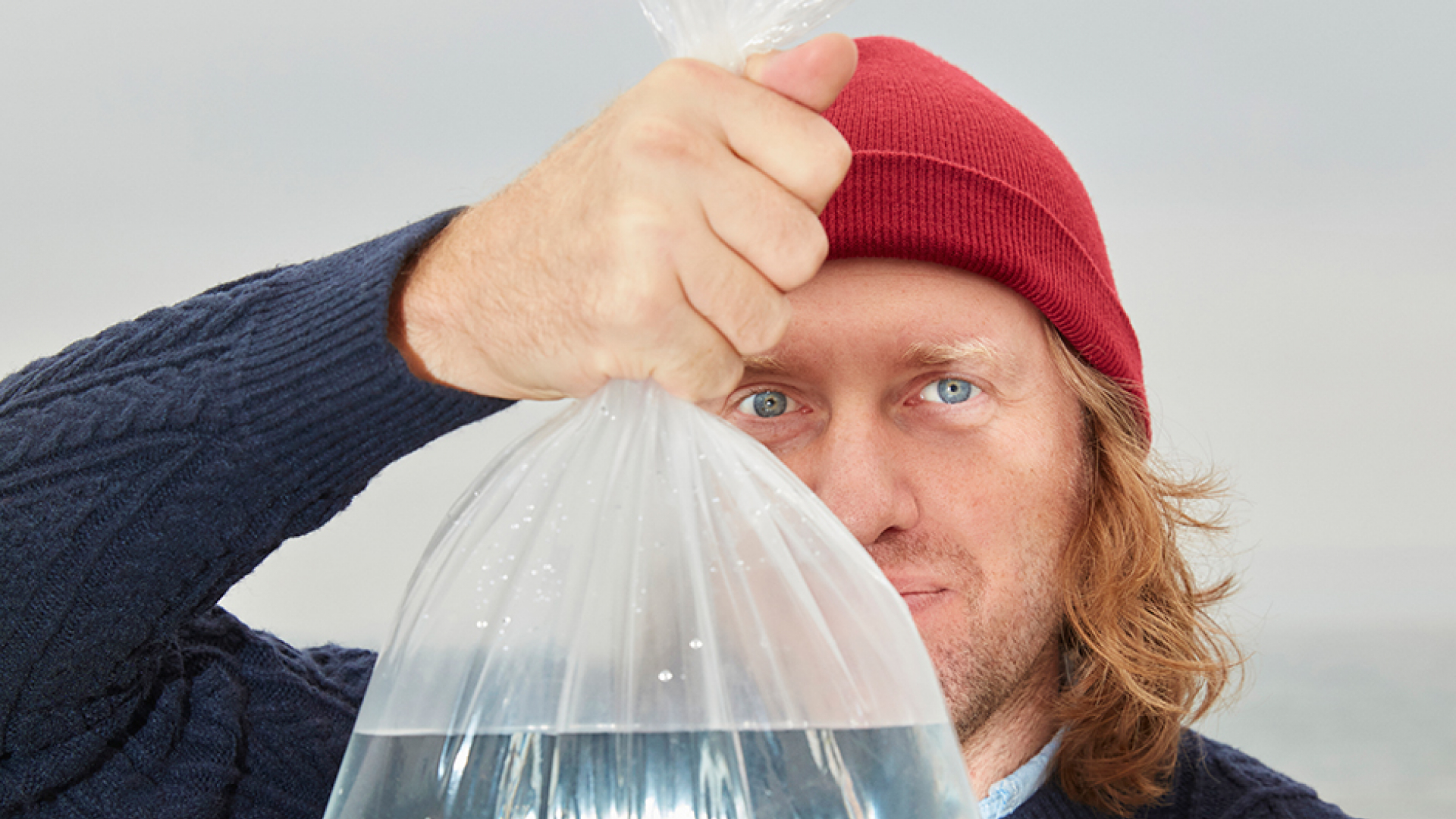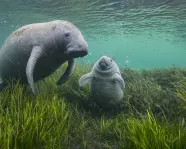Bio
B.Sc., Major in Biology (option Conservation Biology), minor in Political Science, University of British Columbia, 2005
M.Sc., Biology, Université du Québec à Montréal, 2010
Ph.D., Limnology (magna cum laude), University of Potsdam, 2013
Dr. Soren Brothers is the Allan and Helaine Shiff Curator of Climate Change at the Royal Ontario Museum, Toronto. He is also an Assistant Professor at the Department of Ecology and Evolutionary Biology at the University of Toronto. Soren’s research examines the effects of climate change on lakes, and how changes in aquatic systems can influence their greenhouse gas emissions to the atmosphere. More broadly, he is interested in understanding how feedback loops and the transdisciplinary study of lakes can help us better understand and predict global tipping points that may accelerate anthropogenic climate change.
Born in Mississauga and raised in Toronto, Soren has worked on lakes in a diverse array of environments around the world, including the Nunavut tundra, Quebec’s boreal forests, and the Great Lakes. He is leading a Global Lakes Ecological Observatory Network initiative to improve understanding of the widespread greenhouse gas impacts of desiccation. He is also passionate about science communication and community outreach and organized a climate change workshop at the United Nations Civil Society Conference in 2019. Before beginning at the ROM in 2021 he was an Assistant Professor of Limnology at Utah State University, and a CREATE program manager and postdoctoral fellow at the University of Guelph, focusing on multiple stressors and cumulative effects in the Great Lakes.
Research Group Website: sorenbrothers.weebly.com
Scientific Publications (updated list available on Google Scholar)
- 2021Vadeboncoeur, Y., S. Brothers, et al., 2021. Blue waters, green bottoms: filamentous algae blooms (FABs) are an emerging threat to clear lakes worldwide. BioScience, 71:1011-1027.External link, opens in a new tab
- 2021Brothers, S. and Y. Vadeboncoeur, 2021. Shoring up the foundations of production to respiration ratios in lakes. Limnology and Oceanography. 66:2762-2778. Doi: 10.1002/lno.11787
- 2021Kazanjian, G., S. Brothers*, J. Köhler, and S. Hilt, 2021. Incomplete recovery of a shallow lake to a brownification event. Freshwater Biology, 66:1089-1100.External link, opens in a new tab
- 2021Brothers, S., D. Bowes, W.D. Pearse, S. Tank, R. Vanengen, and P. Sibley, 2021. Declining summertime pCO2 in tundra lakes in a granitic landscape. Global Biogeochemical Cycles, 35.2. doi:10.1029/2020GB006850
- 2020Clancy, N., J. Draper, J.M. Wolf, U.A. Abdulwahab, M. Pendleton, S. Brothers, J. Brahney, J. Weathered, E. Hammill, T.B. Atwood, 2020. Protecting endangered species in the USA requires both public and private land conservation. Scientific Reports, 10:11925
- 2020Keller, P.S., S. Brothers, et al. 2020. Global CO2 emissions from dry inland waters share common drivers across ecosystems. Nature Communications.External link, opens in a new tab
- 2018Epperly, J., A. Witt, J. Haight, S. Washko, T. B. Atwood, J. Brahney, S. Brothers, and E. Hammill, 2018. Relationships between borders, management agencies, and the likelihood of impairment. PLOS One, 13:e0204149
- 2018Brothers, S. and P. Sibley, 2018. Light may have triggered a period of net heterotrophy in Lake Superior. Limnology and Oceanography, 63:1785-1798. doi:10.1002/lno.10808
- 2018Mehner, T., B. Lischke, K. Scharnweber, K. Attermeyer, S. Brothers, U. Gaedke, S. Hilt, and S. Brucet, 2018. Empirical correspondence between trophic transfer efficiency in freshwater food webs and the slope of their size spectra. Ecology, 99:1463-1472.
- 2017Hilt, S., S. Brothers, E. Jeppesen, A. Veraart, and S. Kosten, 2017. Translating regime shifts in shallow lakes into changes in ecosystem function. BioScience, 67:928-936.
- 2017Lischke, B., T. Mehner, S. Hilt, K. Attermeyer, M. Brauns, S. Brothers, H.-P. Grossart, J. Köhler, K. Scharnweber, and U. Gaedke, 2017. Benthic carbon is inefficiently transferred in the food webs of two eutrophic shallow lakes. Freshwater Biology doi: 10.1111/fwb.12979
- 2017Brothers, S., Y. Vadeboncoeur, and P. Sibley, 2017. A decline in benthic algal production may explain recent hypoxic events in Lake Erie’s central basin. Journal of Great Lakes Research. 43: 73-78.
- 2017Brothers, S., G. Kazanjian, J. Köhler, U. Scharfenberger, and S. Hilt, 2017. Convective mixing and high littoral primary production can establish systematic errors in lake diel oxygen curves in shallow, eutrophic lakes. Limnology and Oceanography: Methods. doi: 10.1002/lom3.10169
- 2016Brothers, S., Y. Vadeboncoeur, and P. Sibley, 2016. Benthic algae compensate for phytoplankton losses in large aquatic ecosystems. Global Change Biology. doi:10.1111/gcb.13306
- 2016Mehner, T., K. Attermeyer, M. Brauns, S. Brothers, J. Diekmann, U. Gaedke, H. Grossart, J. Köhler, B. Lischke, N. Meyer, K. Scharnweber, J. Syväranta, M. Vanni, and S. Hilt, 2016. Weak response of animal allochthony and production to enhanced supply of terrestrial leaf litter in nutrient-rich lakes. Ecosystems doi: 10.1007/s10021-015-9933-2
- 2015Hilt, S., T. Wanke, K. Scharnweber, M. Brauns, J. Syväranta, S. Brothers, U. Gaedke, J. Köhler, B. Lischke, and T. Mehner, 2015. Contrasting response of two shallow lakes to a partial winterkill of fish. Hydrobiologia, doi: 10.1007/s10750-014-2143-7
- 2014Brothers, S., J. Köhler, K. Attermeyer, H.P. Grossart, T. Mehner, N. Meyer, K. Scharnweber, and S. Hilt, 2014. A feedback loop links brownification to anoxia in a temperate, shallow lake. Limnology and Oceanography, 59(4): 1388-1398.
- 2014Scharnweber, K., J. Syväranta, S. Hilt, M. Brauns, M.J. Vanni, S. Brothers, J. Köhler, J. Knežević-Jarić, and T. Mehner, 2014. Whole-lake experiments trace added terrestrial particulate organic carbon in benthic food webs of shallow lakes. Ecology, 95:1496-1505. http://dx.doi.org/10.1890/13-0390.1
- 2013Brothers, S., S. Hilt, K. Attermeyer, H.P. Grossart, S. Kosten, B. Lischke, T. Mehner, N. Meyer, K. Scharnweber, and J. Köhler, 2013. A regime shift from macrophyte to phytoplankton dominance enhances carbon burial in a shallow, eutrophic lake. Ecosphere, 4: art137. dx.doi.org/10.1890/ES13-00247.1
- 2013Brothers, S., S. Hilt, S. Meyer, and J. Köhler, 2013. Plant community structure determines primary productivity in shallow, eutrophic lakes. Freshwater Biology, 58: 2264-2276. doi:10.1111/fwb.12207
- 2012Brothers, S., P.A. del Giorgio, C.R. Teodoru, and Y.T. Prairie, 2012. Landscape heterogeneity influences carbon dioxide production in a young boreal reservoir. Canadian Journal of Fisheries and Aquatic Sciences, 69: 447-456.
- 2012Brothers, S., Y.T. Prairie, and P.A. del Giorgio, 2012. Benthic and pelagic sources of carbon dioxide in boreal lakes and a young reservoir (Eastmain-1) in eastern Canada. Global Biogeochemical Cycles, 26. doi:10.1029/2011GB004074.
- 2008Brothers, S., J. Vermaire, and I. Gregory-Eaves, 2008. Empirical models for describing recent sedimentation rates in lakes distributed across broad spatial scales. Journal of Paleolimnology, 40(4): 1003-1019.

